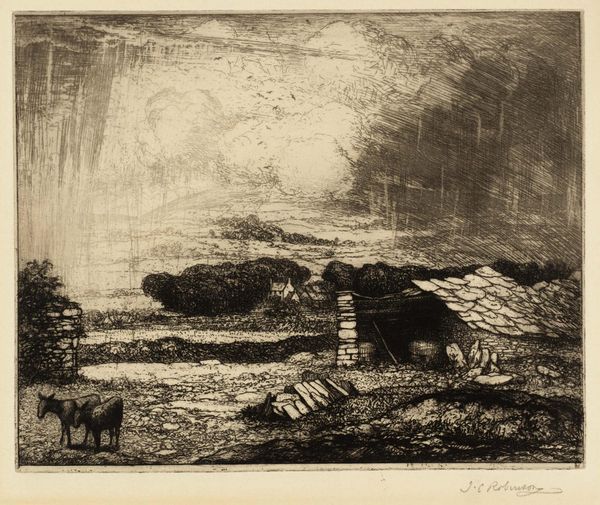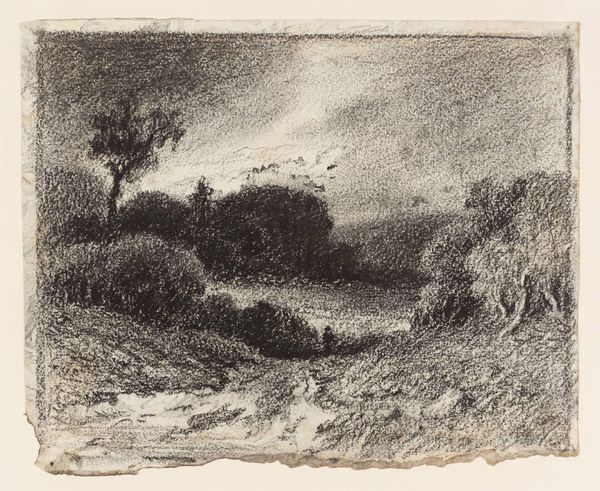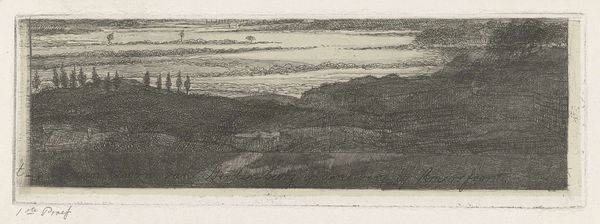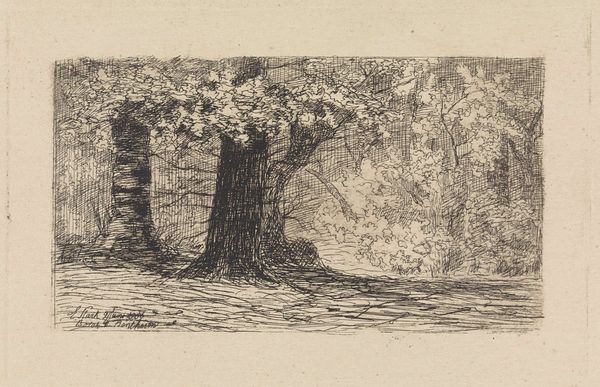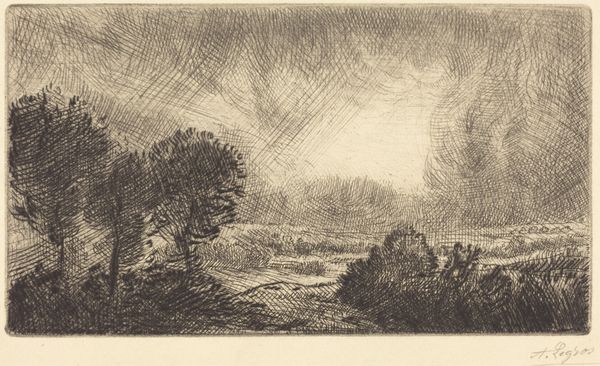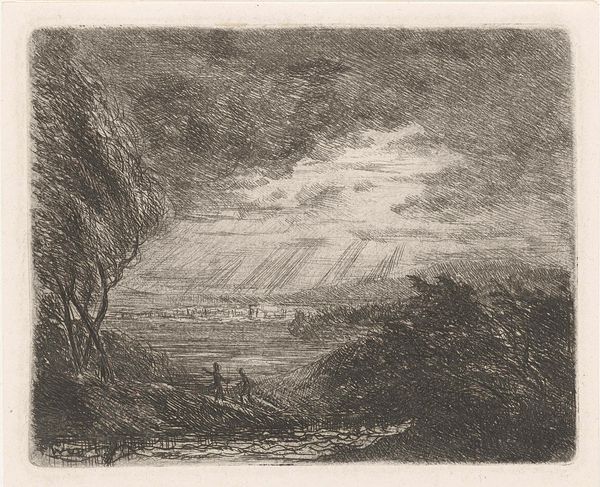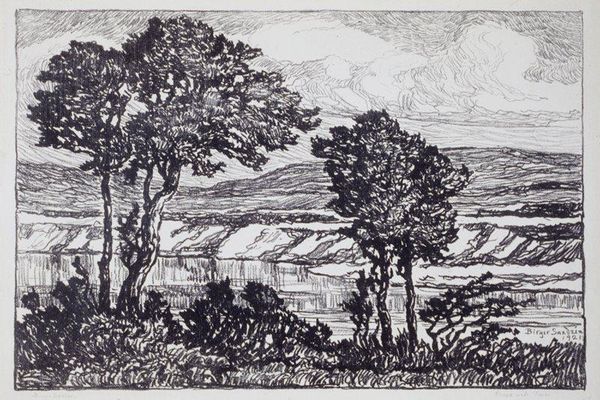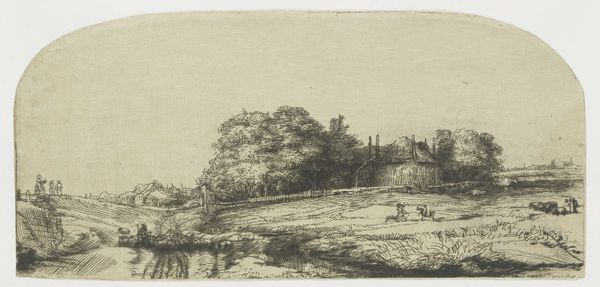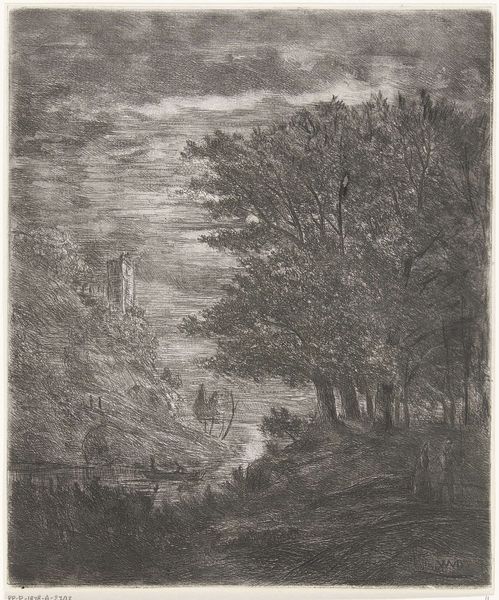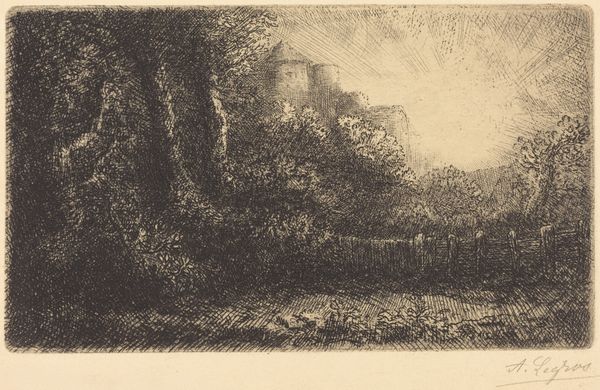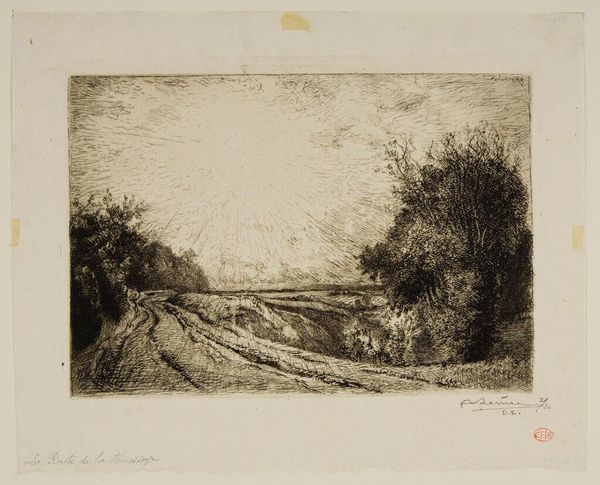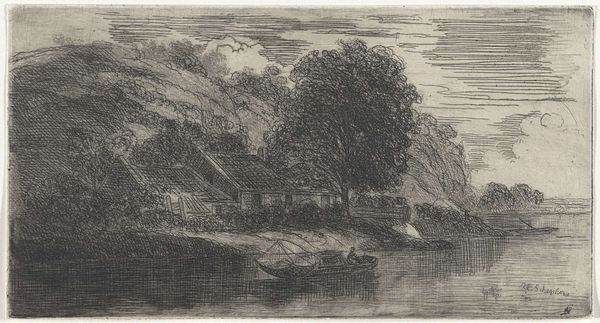
Dimensions: image: 133 x 286 mm
Copyright: CC-BY-NC-ND 4.0 DEED, Photo: Tate
Curator: Looking at this etching, "Corfe Castle" by Sir John Charles Robinson, it strikes me as almost apocalyptic, doesn't it? The ruined castle, the stark light... Editor: Yes, it’s powerfully melancholic! The scale makes the castle appear diminished, a site of former power now overrun by nature and time. I also see a statement about the futility of domination and the enduring power of the landscape. Curator: Absolutely! The artist’s technique, the way he uses light and shadow, feels almost like a lament. I’m wondering if he visited it and thought, "What was this place like back then?" Editor: The image also invites critical reflection on the romanticization of ruins. While the castle represents a specific historical site, Robinson's etching also speaks to broader narratives of imperial decline and the cyclical nature of power. Curator: I hadn't thought of it that way, but it makes perfect sense. It's amazing how a simple scene can hold so much depth. Editor: Indeed. It’s a testament to the enduring power of art, especially its ability to engage with difficult conversations about power, memory, and history.
